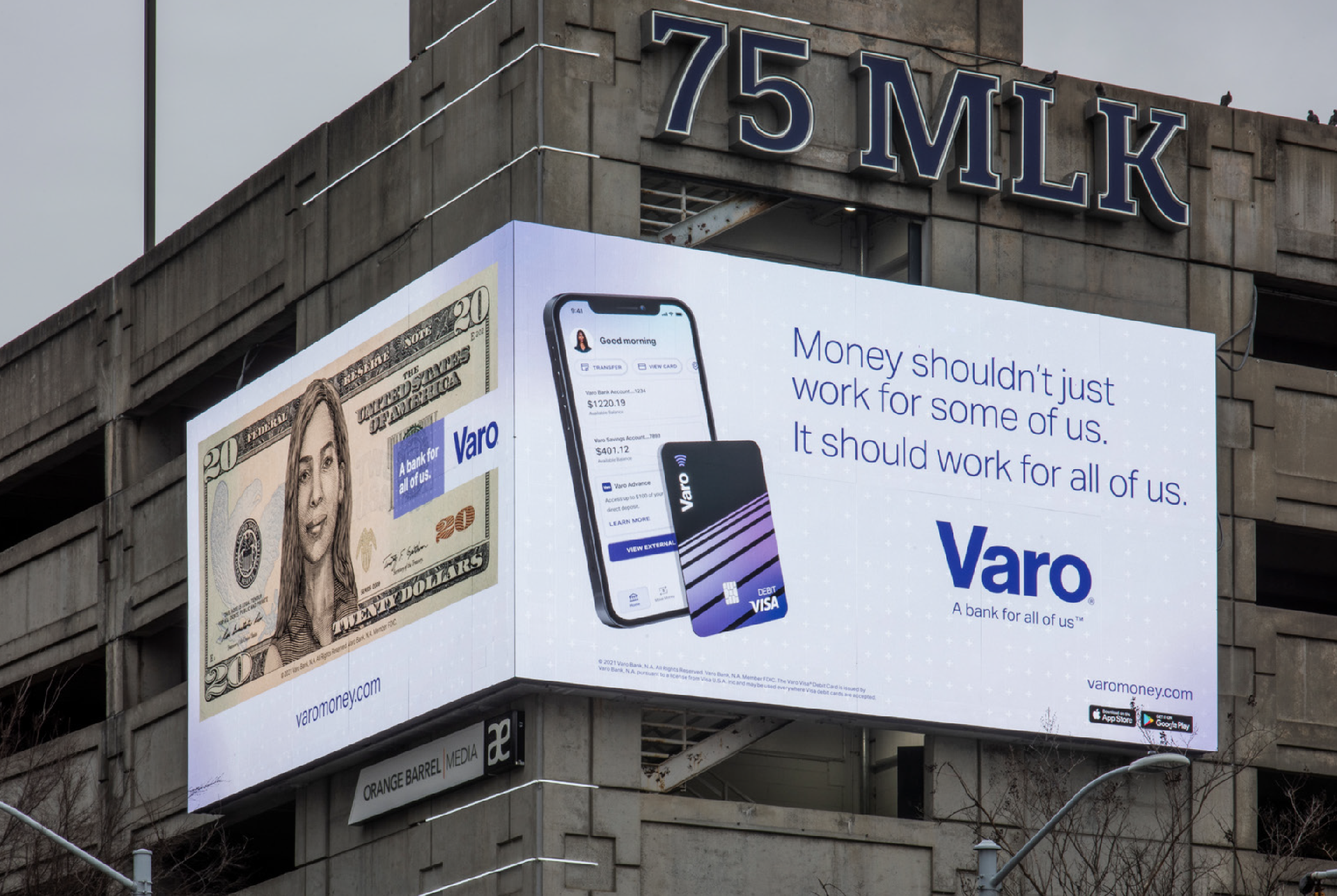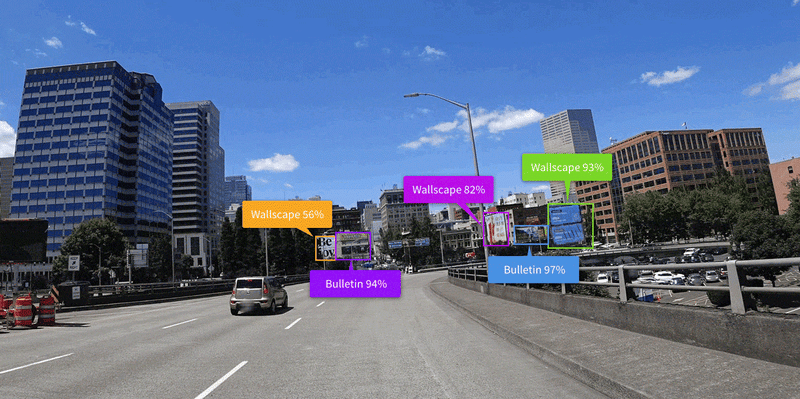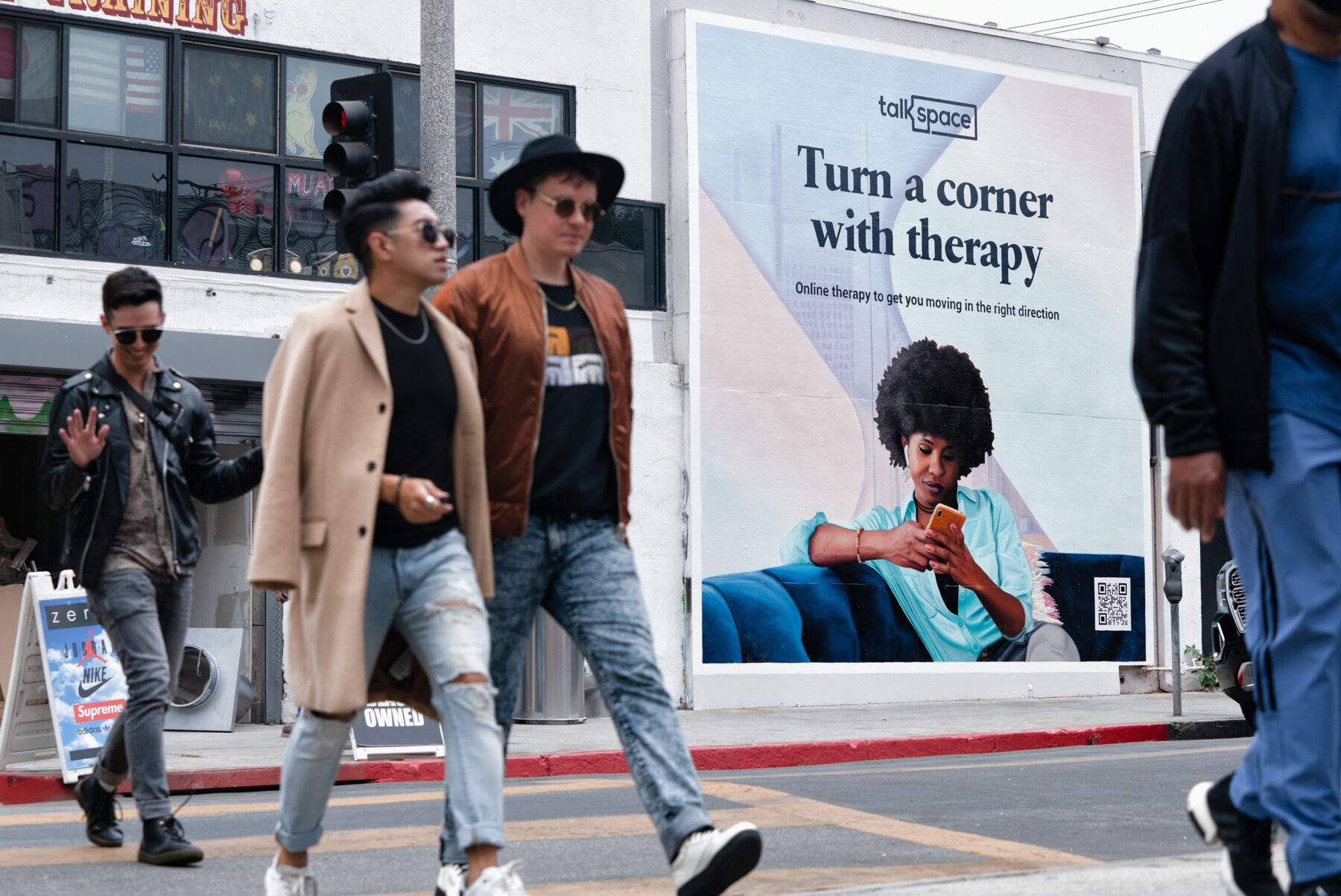
Small or large, new or old, companies of all types leverage out-of-home advertising (OOH) like bulletins and digital billboards to scale their digital marketing campaigns, boost brand awareness and more reliably reach potential customers.
Moreover, OOH products have some of the highest ROI of any item in an advertising budget, returning almost $6 for every dollar spent, according to the Out of Home Advertising Association of America (OAAA).
OOH Ads in the Context of Overall Advertising
Despite that ROI, OOH is still underutilized within the typical advertising budget. It ’s a small sliver — just 4-5% in most cases, although WARC (World Advertising Resource Center) has estimated OOH’s share at up to 10% for successful brands. For comparison’s sake, digital and TV advertising collectively make up over 80% of ad spend for those same organizations.
Why is OOH advertising dwarfed by other forms of advertising? One big reason is the mistaken perception that the impact of OOH media is impossible — or at least much more difficult than the alternatives — to accurately measure.

Online digital advertising through a Facebook ad, for instance, lets you granularly track how many people interacted with an ad and what action(s) they took en route to a conversion. Compared to that level of visibility, what can OOH offer?
In the past, an OOH ad campaign might have seemed like a shot in the dark, with only vague estimates of how many people saw a bulletin. But that’s not the case anymore. Modern OOH attribution lets you understand the specific impact of an OOH campaign, through seeing metrics including but not limited to:
This data in turn enables any OOH advertising expenditure to be evaluated through media mix modeling (MMM) in a marketing budget. MMM is an important practice in determining ad budget allocations. It involves looks at:
Traditionally, MMM has enabled companies to see if exploring a new channel, targeting a different region or ramping up spend affected the high-level efficacy of a campaign. MMM examines impacts on brand awareness and equity, seasonality and other overarching metrics from a campaign. Due to the rise of more sophisticated attribution in the OOH world, it’s now possible to apply the MMM methodology to OOH ads, looking at various formats, locations and spending allocations to see which ones yield the best results in practice.
The State of OOH Ad Spending
Now that we can see that OOH ad impact is measurable, let’s look at what organizations are doing with their OOH spend in the real world.
OAAA has revealed that U.S. firms spent over $6 billion on OOH advertising and marketing in 2020, although this figure was relatively low and a one-time anomaly due to COVID-19. Double-digit growth (over 20%) in OOH ad spend is expected in 2021, per WARC Data, bringing spending on outdoor media like digital billboards back above pre-pandemic levels.
The size of a company’s OOH ad budget can vary depending on its industry, target audience, revenue and targeted locations. OAAA’s numbers show that the top five verticals for OOH ad spending in 2020 were local services, retail, insurance and real estate, media and food service. In recent years, the strongest growth in OOH advertising budgets has been among firms in the political and healthcare spaces.
Over one-quarter of the top 100 OOH ad spenders increased their budget allocations for OOH from 2019 to 2020. But how do these OOH dollars compare to what brands spend on other advertising campaigns, like those on social media?
Globally, OOH averaged only about 5% of all ad spend from 1990 to 2018. The most successful firms, though, allocated about 13% of their budgets to OOH spending, according to OAAA.
Determining Your OOH Advertising Budget
However, the OAAA’s figure is just a historical average and not necessarily a target to aim for when building an outdoor advertising and marketing strategy. When you break out your actual marketing budget calculator, your ad budget determinations will depend on criteria like:
Target Audience Demographics and Location
Who are you trying to reach?
The purchasing power of your audience will often be positively correlated with the size of your advertising budget, since consumers with lots of disposable income are likely to reside in areas with high costs of living.
People 50 years and older account for a majority of all consumer spending but are relatively unaddressed in advertising budgets, according to Epsilon. That disparity may lead to lower ad rates than those for campaigns directed at the hyper-competitive 18-to-34 segment, for instance.

Location and Traffic
Similarly, the market in which an OOH product appears has a huge effect on how much you’ll have to budget for it.
If your advertising objectives lead you to buy a digital billboard on, say, Sunset Boulevard, that could easily consume six figures in a flash. In contrast, a campaign in a low-cost ZIP code could give you breathing room for multiple bulletins or street furniture advertising.
The number of people who will pass by the bulletin, billboard or other media formats will also influence its cost — the greater the expected traffic, the higher the budget allocation.
Outdoor Media Format
Likewise, the larger the dimensions of a piece of OOH inventory, the more it will typically cost. For example, highway bulletins are more expensive than posters or kiosks.
Digital OOH formats, which are especially useful for inbound digital marketing, can cost more than traditional equivalents, too.
As you draw up your budget, think about each of these criteria as a different path toward maximizing your ROI. For example, smaller, less expensive formats and campaigns will yield acceptable results for your initial target audiences. But the only way to know for sure — and to eventually take on more complex marketing efforts — is to reach out to an expert.
How an OOH Specialist Can Help You Build an Effective Advertising Budget
An OOH specialist can help you optimize your advertising budget in two main ways:
Let’s say you weren’t sure yet how much to spend, and on which formats, in a specific city. By working with an OOH specialist, you could comb through web analytics matching location observations with devices. You could also see where in that city your marketing spend would go furthest in terms of impressions with your audience.
The money spent on the OOH specialist’s services would generate major ROI with more precise targeting for your ads. Plus, the OOH specialist could help you find outdoor advertising company inventory priced within your budget.
There are many similar benefits to an OOH specialist partnership. To get started, reach out to the experts at Billups to learn more about how we can help you design your next OOH advertising budget!
Don't worry—we won't share your information.